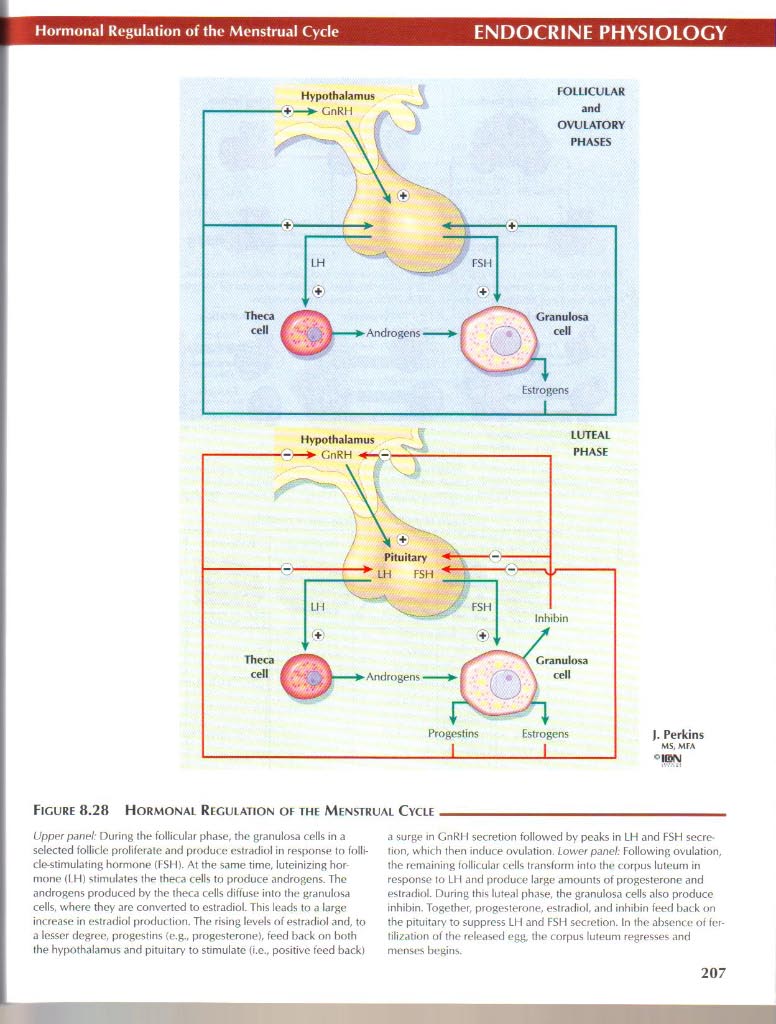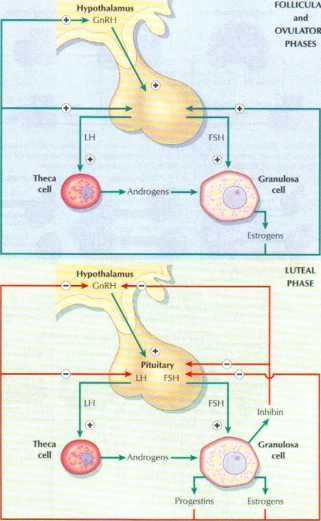76657 netter188

ENDOCRINE PHYSIOLOGY
Hormonal Kugulation of thc Monstru.il Cyde

Hormonal Reculation oe the Mfnstrual Cycle
Figurę 8.28
Upper panel: During the follicular phase, thc granulosa cells in a sclccted fołlicłe proliferale and ptoduc v. estradiol in resjronse In folli-cle-stimulating hormone (FSM). At the same time, luteinizing hor monę (I H) stimnlates the theca cells to produce androgons. The androRens produccd by the theca cells diffuse into the granulosa cells. where they aro converted to estradiol. This leads to a large inerease in estradiol production. The rtsing levels of estradiol and, to a lesser degrec, progestins (e.g., progesterone), feed back on both the hypothalamus and pituitary to stimulatc (i.e., positivc feed back) a surge in GnRI I secretion followed by pcaks in LH and ESH secre-tion, which then induce ovulation. Tower panel: Fołlowing ovulation, the remaining follicular cells transfomi into the corpus luleum in response lo LU and produce large amounts of progesterone and estradiol. During this luteal phase, the granulosa cells also produce inhibin. Together, progesterone, estradiol, and inhibin feed back on the pituitary to suppress LIH and FSH secretion. In the absence of fer-tili/ation of the released egg, the corpus luleum regresses and mensc-s begins.
207
Wyszukiwarka
Podobne podstrony:
netter53 CARDIOVASCULAR PHYSIOLOGY Overview of thc Cardiovascular System Pulmonary
netter165 ENDOCRINE PHYSIOLOGY Posterior Pituilary: Oxytocin Oxyto<in pickcd up by capillaries of
netter156 GASTROINTESTINAL PHYSIOLOGY Overvievv of Cii Trać! Fluid and Electrolyte Transport Ingest
netter158 GASTROINTESTINAL PHYSIOLOGY Digestion of Carbohydrales Maftose Pancreatic amyiase
netter167 ENDOCRINE PHYSIOLOGY Growth Hormone Increased linear growth : Decreased adiposity Increase
netter183 ENDOCRINE PHYSIOLOGY Gonad and Genital Duet Formation (pulled aside) I .‘rogemtoi•y Testos
więcej podobnych podstron